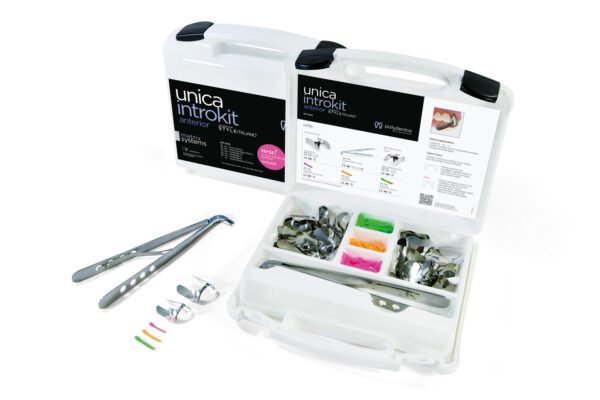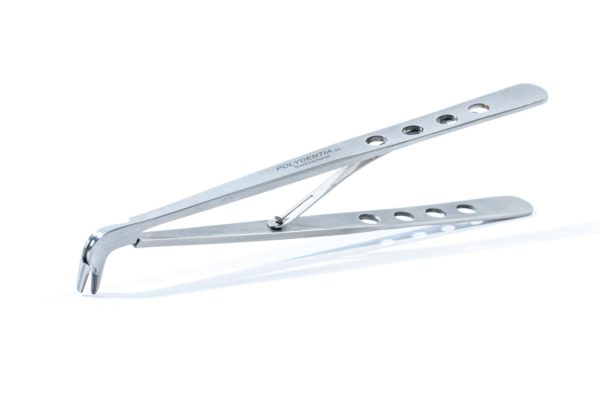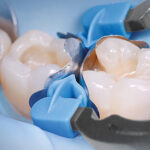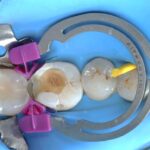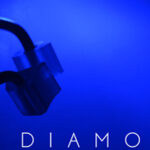05 Dec Post traumatic rehabilitation of incisors 11-21- Unica anterior – Prof. Gilbert Jorquera
Post traumatic rehabilitation of incisors 11-21 – Unica anterior
by Prof. Gilbert Jorquera

Prof. Gilbert Jorquera
Prof Gilbert Jorquera was graduated from the dental school of the Universidad de Chile in 2005, later he studied his specialty in oral implantology at the graduate school of the Universidad de Chile and a master’s degree in University Education at the Universidad Europea de Madrid. He has dedicated his private practice of dentistry mainly to the area of aesthetic rehabilitation and the year 2017 was trained in the StyleItaliano philosophy by Dr Jordi Manauta. Prof Gilbert Jorquera currently works as Associate Professor in the School of Dentistry of the Universidad de los Andes, where he teaches in the area of oral rehabilitation, is also coordinator of the diploma of aesthetics in oral rehabilitation of the same University. Prof Jorquera is also author or co-author of scientific publications in restorative dentistry topics.
case report
The patient, a 25 years old male came to our attention presenting a dentoalveolar trauma with fracture of incisor 21 and partial chipping of incisal edge on 11. Since no pulp exposure was observed, we decided to proceed to the immediate dentinal sealing followed by the direct composite reconstruction of the tooth anatomy.
The following images show the step-by-step restorative procedure using the Unica anterior matrix.
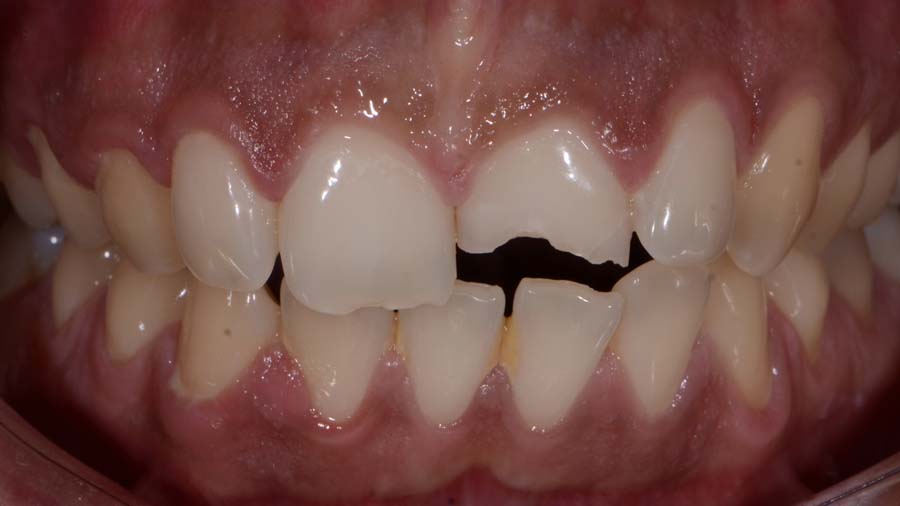
1: Pre-operatory view evidencing a dentoalveolar trauma with a complex crown fracture without pulpal exposure on incisor 21 and partial chipping of the incisal edge on 11.
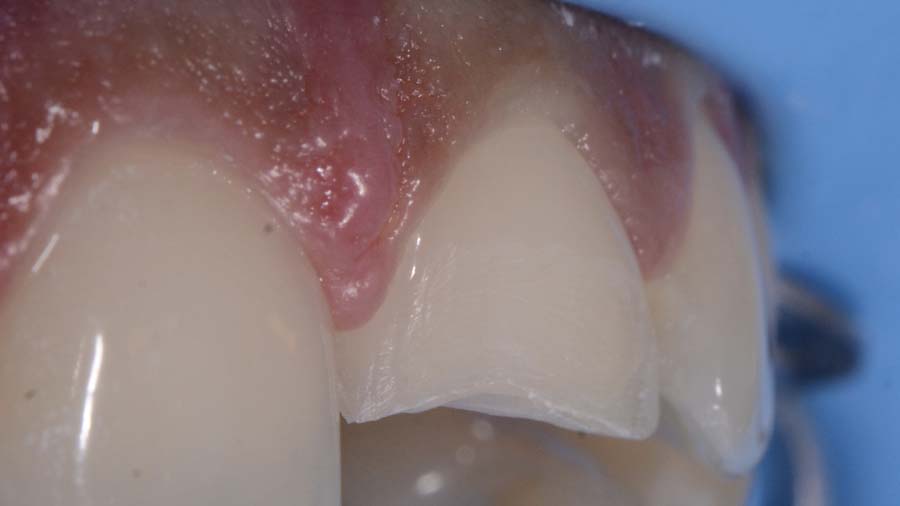
2: Isolation of the operatory field using a rubber dam before proceeding with the elimination of enamel without sustenance and preparation of the vestibular bevel.
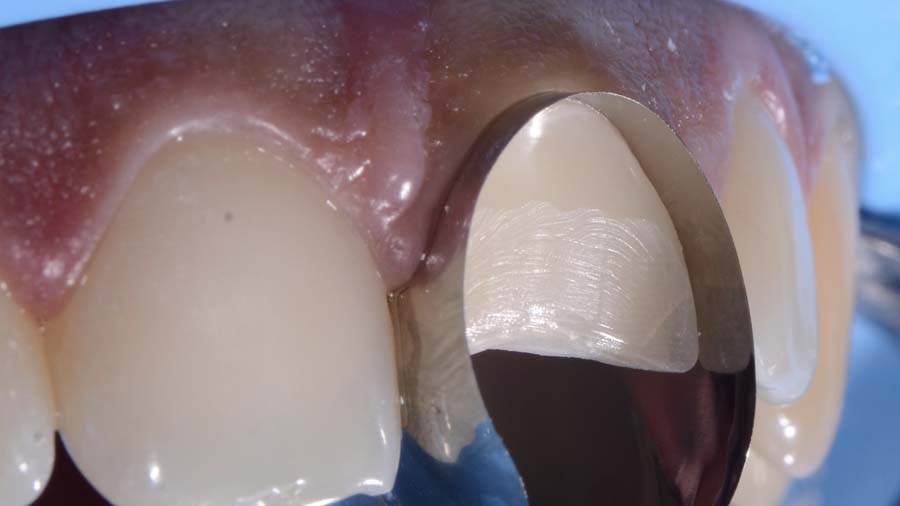
3: Installation of Unica anterior; in the present case the contoured shape of Unica allowed a stable placement, even in absence of contact points. For this reason, we decided not to hold Unica in place by wedges nor by the light-curing flowable myCustom Resin (Polydentia).
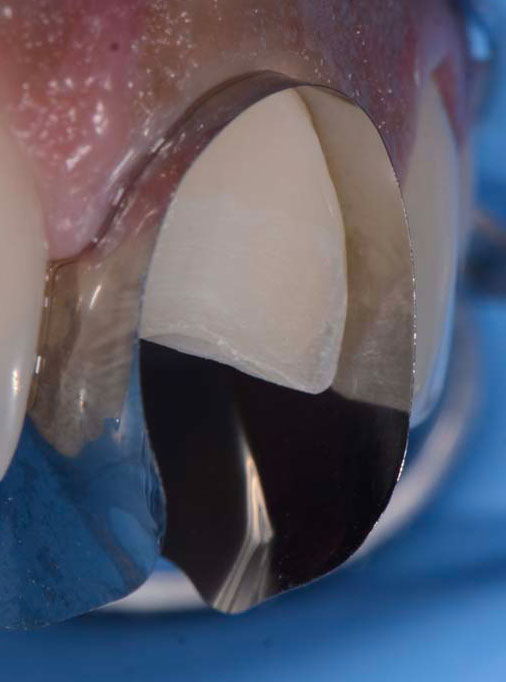
4: Immediate dentinal sealing in dentine with Scotchbond Universal (3M).
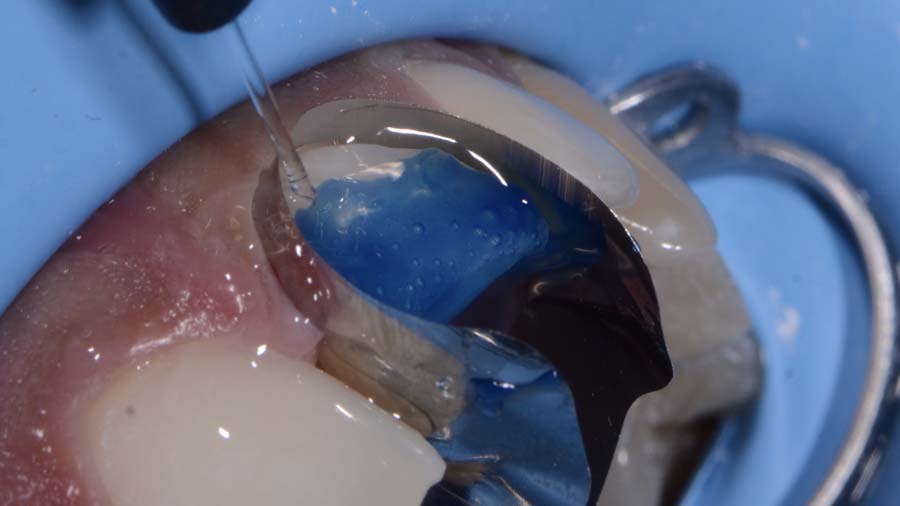
5: Selective enamel etching with orthophosphoric acid.
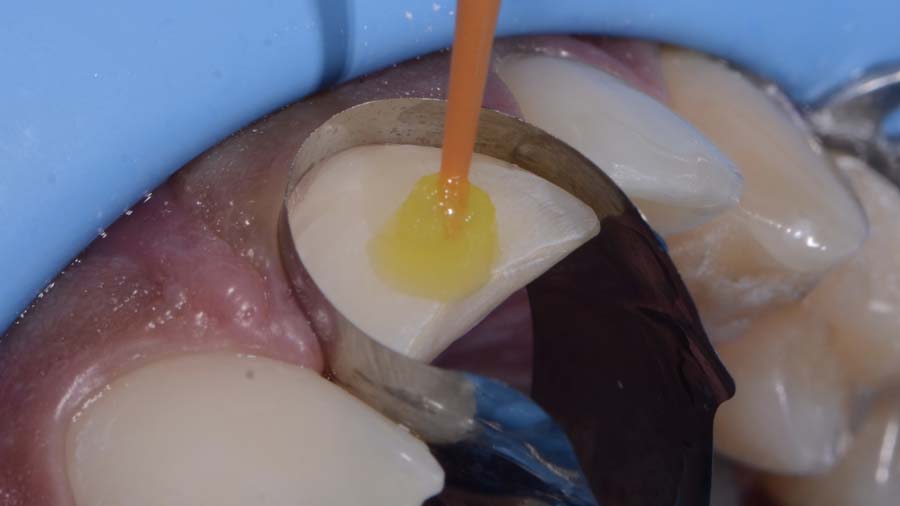
6: Adhesive procedure: application of a universal adhesive system (Scotchbond Universal 3M).
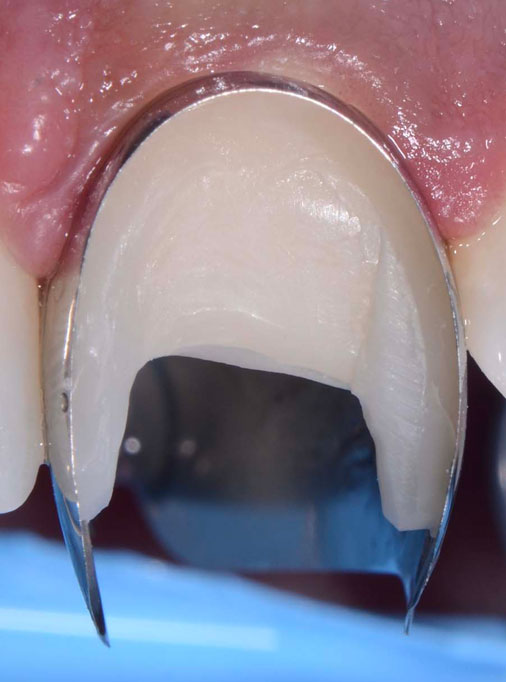
7: Reconstruction of the proximal profiles with Filtek Z350 Body A2. Another advantage of the contoured shape of the Unica anterior is the possibility to visualize the final contour of the tooth before proceeding with the restoration.
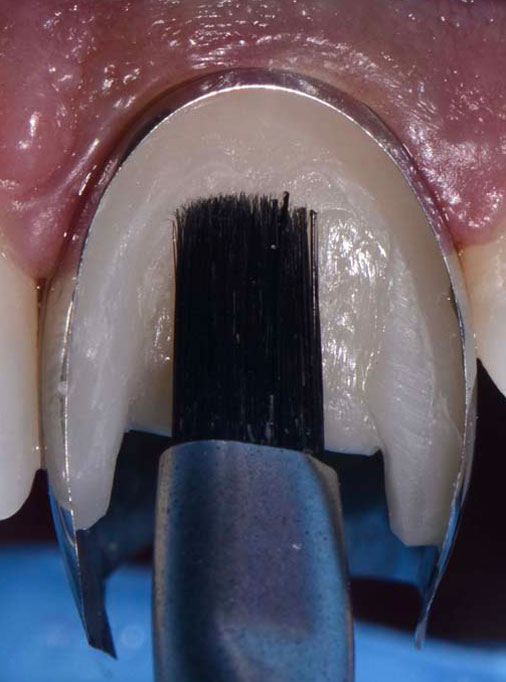
8: Reconstruction of coronary fragment with Filtek Z350 Body A2 with the help of Compobrush (SmileLine).

9: Reconstruction of coronary fragment with Filtek Z350 Body A2 with the help of Compobrush (SmileLine); Before proceeding with the final shaping and polishing, the composite was light cured and the matrix removed.
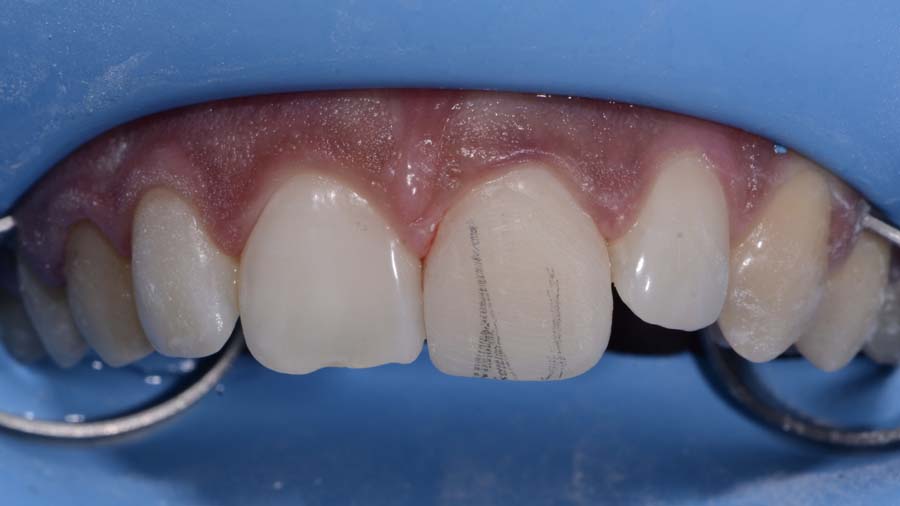
10: The clinical situation after contouring the emergence profile and proximal walls. This image shows the tooth texture sketched on the composite surface.
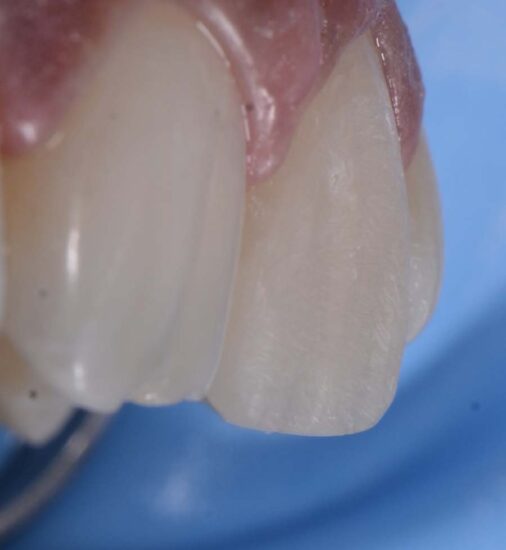
11: The final anatomy of incisor 21 before polishing.
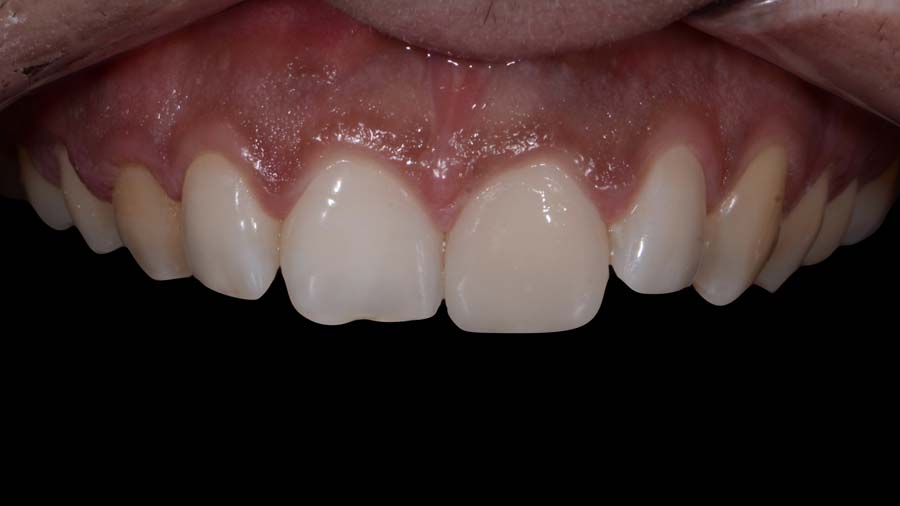
12: Final polishing with Soflex diamond spiral 3M.
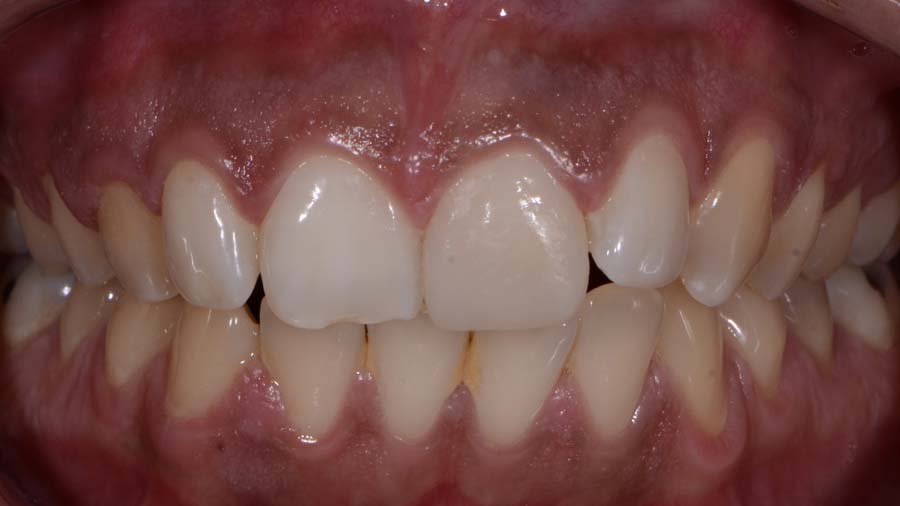
13: Immediate post-operative situation.
conclusion
Unica anterior is an indispensable tool for the reconstruction of anterior teeth that have suffered dentoalveolar trauma, because its design and thickness it allows to safely return the contour, emergency profile and contact relation of the anterior teeth, reducing the clinical time in retouching later. Unica anterior also protecting the neighbouring teeth during the procedure. Unica anterior facilitates my daily clinical work.
other clinical cases
-
Class II adjacent cavities on 1st and 2nd molars – QuickmatFIT anatomical sectional matrices & myRing Forte – Dr David Gerdolle
A 28-year-old female patient, without any systemic medical conditions presented with a carious lesion affecting both molar 46D and 47M. The following case illustrates the direct composite restoration of the lesion using the Polydentia QuickmatFIT anatomical sectional matrices in combination with myRing Forte and myWedge plastic v-shaped wedges....
-
Class II cavity direct composite restoration on a young permanent premolar – myClip 2.0 – Dr Marina Papachroni
For young patients rebuilding the anatomy in class II cavity restorations is a major issue but not making too many occlusal adjustments after finishing the layering procedures is one of the same importance aspects. The following images show the step-by-step treatment we performed for treating decay on the upper first premolar of a 15-year-old teenager. ...
-
Class II cavity direct restoration on young permanent molar with myQuickmat Forte – Dr Marina Papachroni
Class II (interproximal) decay involves the proximal surface of a posterior tooth and it is a common occurrence in many dental patients. One challenge for the clinician is to accurately recreate a physical contact to the adjacent tooth and, at the same time, to restore proper interproximal anatomic form. This case involves a teenager 16 years old with an interproximal lesion in his left lower molar (#36)....
-
Class II direct composite restoration on first premolar – QuickmatFLEX sectional matrices and myClip Junior – Dr Marina Papachroni
A male teenager came to our office feeling pain in the upper left quadrant. We proceeded with a Class II restoration of the first premolar without removing brackets. The following images show the step-by-step direct composite restoration procedure using the premolar sectional matrix QuickmatFLEX in combination with the paediatric sectional matrix ring myClip junior. ...
-
Class II restoration of a primary molar – myRing Junior – Dr Sabová
The young patient came for a periodic checkup. After a preliminary analysis we found a class II mesial carious lesion on primary molar 6.5. Since the dimensions of the carious lesion were limited, we decided to proceed with a direct composite restoration procedure using myJunior kit from Polydentia. ...
-
Class II restoration on a first molar – QuickmatFIT anatomical sectional matrices and myRing Forte – Dr Cristian Scognamiglio e Dr Alessandro Perucchi
The patient came for a consultation complaining of discomfort at tooth 36 when chewing. Molar 36 presented a very old composite restoration with initial disto-occlusal infiltration. We decided to carry out an OD restoration that also involved the buccal surface in order to replace the filling with a new aesthetic restoration. In this clinical case, we illustrate the procedure for the step-by-step restoration of tooth 36 using the Polydentia QuickmatFIT Molar sectional matrix in combination with the myQuickmat Forte sectional matrix ring....
-
Class II restoration on second bicuspid – myQuickmat Forte kit – Dr. Chiodera
The Polydentia myQuickmat Forte kit is a very effective system for posterior class II restorations....
-
Diamond24, 24 solutions for your restorations of Class II cavities
Diamond24 and myRing Classico: 24 solutions for your Class II restorations. Read the article written by Dr. Chiodera, which explains how to get great contact points with Diamond24 and myRing Classico for Class II cavity restorations. ...
-
Dr. Chiodera – Class III restoration – Unica anterior
The patient came to our attention for a regular check. A first analysis revealed a class III carious lesion on incisor 21. We decided to eliminate the carious lesion and proceed with a direct composite restoration of the cavity....
-
Dr. Chiodera – MOD restoration on first Molar – myQuickmat Classico kit
The Polydentia myQuickmat Classico kit is a very efficient system for posterior class II restorations....

